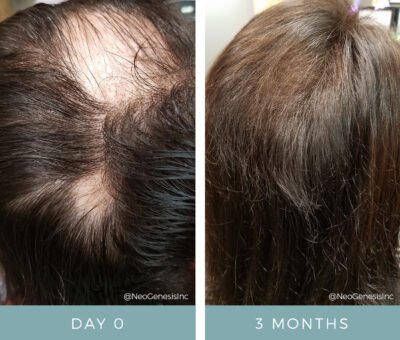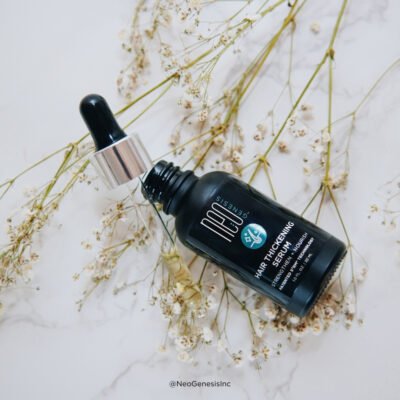Hair loss is a common concern among both men and women, often linked to genetics, aging, or environmental factors. Whether you’re noticing thinning hair, excessive shedding, or other signs of hair loss, addressing the issue early and implementing the right strategies can help protect and restore your hair’s health.
Managing hair loss isn’t just about applying treatments—it involves a comprehensive approach, including proper scalp care, balanced nutrition, and targeted solutions. Below, we cover 7 effective tips to help you manage hair loss and promote a healthy scalp.
 Understanding Hair Loss and Its Causes
Understanding Hair Loss and Its Causes
Hair loss occurs when the hair growth cycle is disrupted. Common causes include:
- Genetics (androgenetic alopecia)
- Hormonal changes (e.g., pregnancy, menopause, or thyroid issues)
- Stress (physical or emotional)
- Nutritional deficiencies (low iron or biotin levels)
- Scalp health conditions (e.g., dandruff or psoriasis)
While genetics and aging are uncontrollable factors, you can take actionable steps to mitigate their impact and slow hair loss.
1. Prioritize Healthy Scalp Care
A healthy scalp is the foundation for strong and vibrant hair. Poor scalp health—such as buildup, dryness, or lack of circulation—can clog follicles and weaken hair growth.
How to care for your scalp effectively:
- Wash your scalp gently using sulfate-free shampoos to prevent buildup and irritation.
- Exfoliate weekly with scalp scrubs or cleansing brushes to remove dead skin cells and product residue.
- Choose lightweight, nourishing products like the Hair Thickening Serum. It’s formulated with patented S3RM® technology to reduce shedding, support hair density, and renormalize the follicles. Simply apply 2-3 drops to problem areas and massage lightly.
Pro Tip: Massage your scalp for 5-10 minutes daily to stimulate blood flow, which nourishes the hair roots.
2. Opt for Natural Hair Restoration Products
Look for products with natural ingredients that target hair loss without harsh chemicals. Notable ingredients include:
- Camellia Sinensis Leaf Extract, which has antioxidant properties to protect follicles.
- Clover flower extract, known for balancing DHT levels—a hormone linked to hair loss.
- Larix Europaea Wood Extract, helps in transitioning dormant hair follicles to the anagen or growth phase of the hair.
Natural hair restoration solutions, like the Hair Thickening Serum mentioned earlier, includes these ingredients and is gentle yet effective for managing hair loss while promoting healthy regrowth.
3. Maintain a Nutrient-Rich Diet
A balanced diet plays a critical role in hair health. Hair follicles require key nutrients to produce strong, healthy strands. Prioritize foods high in:
- Protein (chicken, fish, eggs): Hair is made of keratin, a protein that strengthens strands.
- Iron (spinach, lentils, red meat): Iron supports oxygen flow to hair follicles.
- Biotin (almonds, sweet potatoes): Biotin promotes thicker hair by encouraging keratin production.
- Vitamin D (fatty fish, mushrooms): Deficiency in vitamin D is linked to hair thinning.
Consider supplements if dietary intake is insufficient—but consult a healthcare provider first.
4. Adopt Stress-Reduction Techniques
Stress is among the leading causes of temporary hair loss (telogen effluvium). Managing stress can prevent premature shedding and hair thinning.
Try these stress-management strategies:
- Exercise regularly to boost endorphins and improve circulation.
- Meditation or yoga to relax your mind and body.
- Incorporate deep breathing exercises to manage daily stress.
Better mental well-being often correlates with improved hair and skin health.
5. Avoid Harsh Treatments and Heat Styling
Excessive use of heat tools or chemical treatments weakens hair over time, increasing breakage and hair loss.
How to minimize damage:
- Use heat tools sparingly and apply heat protectants liberally.
- Avoid tight hairstyles that pull on the hair, such as ponytails or braids, as they can lead to traction alopecia.
- Opt for natural air drying when possible, and look into gentler alternatives for coloring treatments (e.g., semi-permanent dyes).
By avoiding harsh treatments, you can protect your strands from further weakening.
6. Regular Trims and Proper Brushing
Regular trims help maintain hair health by removing split ends before they travel up the shaft, causing more damage. Proper brushing also prevents further breakage.
Tips:
- Use wide-tooth combs or brushes with soft bristles to avoid unnecessary tugging.
- Start brushing at the ends and work your way up to minimize strain on the roots.
- Trim your hair every 6–8 weeks to keep ends healthy and prevent fraying.
This simple maintenance routine helps your hair look fuller and healthier over time.
 7. Seek Professional Help When Needed
7. Seek Professional Help When Needed
If proactive measures don’t appear to slow hair loss, it might be time to consult a dermatologist or trichologist (a specialist in hair and scalp health). They can identify underlying issues and recommend medical treatments or advanced therapies such as microneedling and hair transplants (for advanced cases of hair follicle damage).
Early intervention is key to reducing the progression of hair loss and preserving healthy hair.
Start Your Journey to Healthier Hair
Managing hair loss is a process that requires commitment and care. By focusing on scalp health, using natural hair restoration products, and maintaining overall wellness, you can slow down shedding and support new growth.
For those seeking more tailored solutions, consider adding products like the Hair Thickening Serum to your daily routine. With its patented S3RM® technology, it’s designed to reduce shedding, improve hair density, and keep your scalp in optimal condition.
Take control of your hair health today. With thoughtful care and the right tools, managing hair loss becomes an achievable goal.







